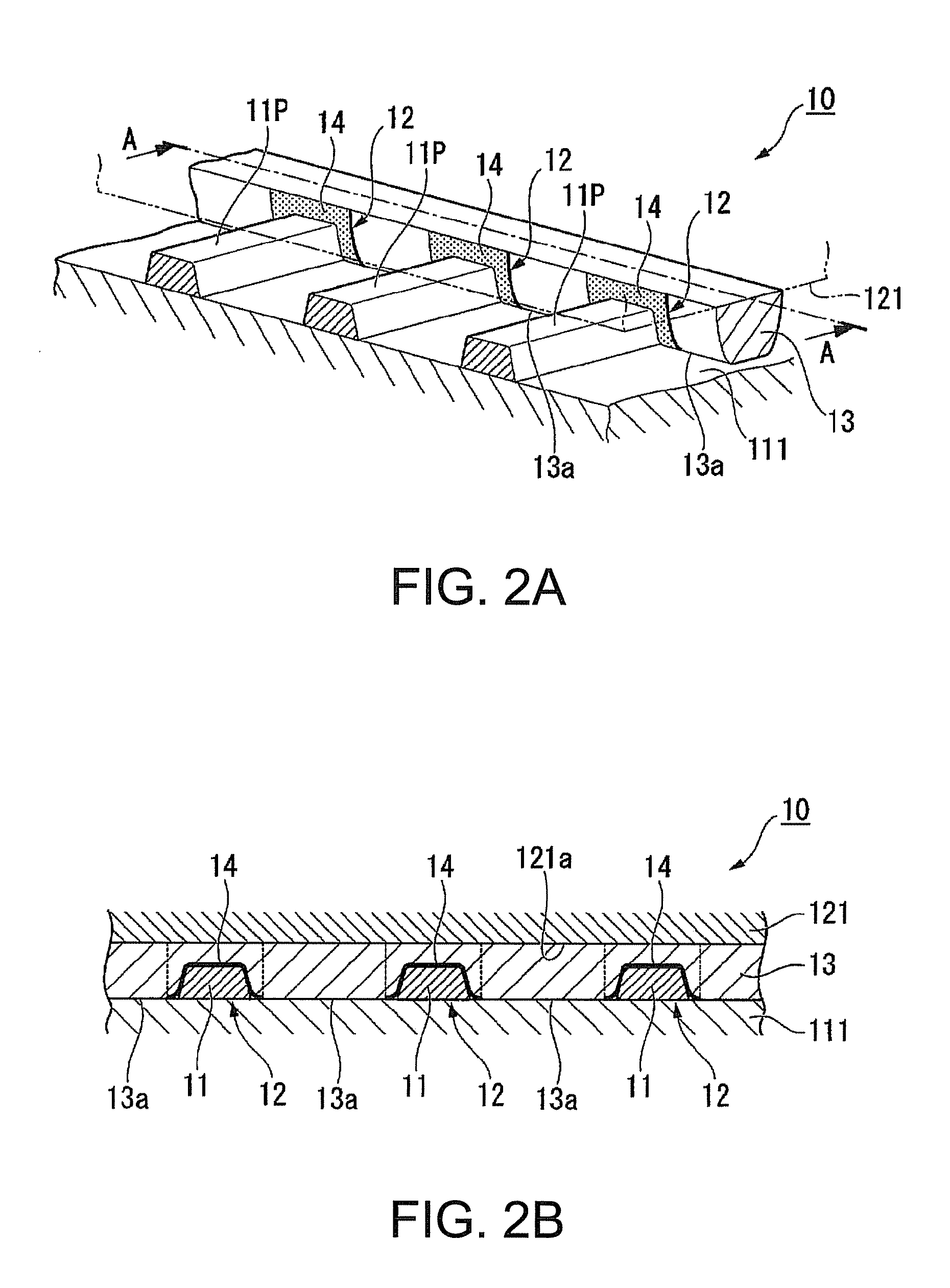Mounting structure of electronic component
a technology of mounting structure and electronic component, which is applied in the manufacture of printed circuits, printed circuit aspects, basic electric elements, etc., can solve the problems of inability to obtain sufficient bonding strength, contact defect, fluctuation in distance between lands and bump electrodes, etc., to improve the reliability of conductive connection, improve bonding strength, and reduce mounting costs
- Summary
- Abstract
- Description
- Claims
- Application Information
AI Technical Summary
Benefits of technology
Problems solved by technology
Method used
Image
Examples
first embodiment
[0065]FIG. 2A is a magnified perspective view illustrating main parts of a first embodiment, which is the mounting structure of the electronic component 121 in the liquid crystal device 100. FIG. 2B is a sectional view along A-A line in FIG. 2A. 11P in FIGS. 2A and 2B indicates a wiring pattern provided on the substrate 111, and the number 11 indicates each terminal installed in the wirings, i.e. any of the above-described terminals 111bx, 111cx, and 111dx. In this embodiment, the terminals 11 have a relatively large film thickness, which therefore means that the height of the terminals 11 is large, with a transverse sectional surface thereof being approximately trapezoid. The number 12 indicates each bump electrode provided to the electronic component 121.
[0066]In these embodiments, as illustrated in FIG. 2A and sectional views of FIGS. 3A and 3B, each of the bump electrodes 12 has underlying resin 13 and a conductive film 14. The underlying resin 13 is shaped approximately like a ...
second embodiment
[0081]In the second embodiment shown in FIGS. 5A and 5B, the fluctuation in height of the terminals 11a and 11b originates from the process variation in the manufacturing of the terminals 11. Here, since the terminals 11 are formed with an additive process (plating deposition), they have a relatively thick film thickness, which means that the height of the terminals 11 is large, and a transverse sectional surface of the terminals 11 is approximately trapezoid. The terminals 11 may be formed in other shapes such as: one formed by etching with the transverse sectional surface being rectangular as shown in FIG. 6A; a thin film formed by sputtering as shown in FIG. 6B; and an approximately like a barrel vault formed by printing as shown in FIG. 6C.
[0082]The terminal 11a and the terminal 11b with different heights are bonded to two of the bump electrodes 12 corresponding thereto while absorbing the height fluctuation (difference) of the terminals 11a and 11b, and in this state, the expos...
PUM
 Login to view more
Login to view more Abstract
Description
Claims
Application Information
 Login to view more
Login to view more - R&D Engineer
- R&D Manager
- IP Professional
- Industry Leading Data Capabilities
- Powerful AI technology
- Patent DNA Extraction
Browse by: Latest US Patents, China's latest patents, Technical Efficacy Thesaurus, Application Domain, Technology Topic.
© 2024 PatSnap. All rights reserved.Legal|Privacy policy|Modern Slavery Act Transparency Statement|Sitemap



